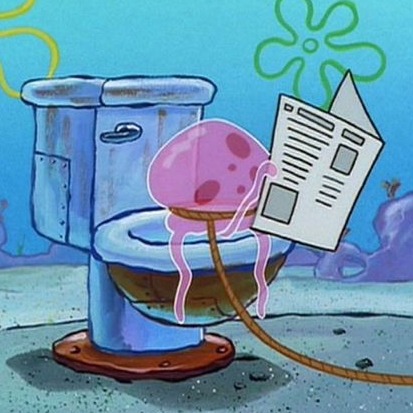Notice
Recent Posts
Recent Comments
Link
Everything has an expiration date
[JSP & JDBC & Oracle] 20231215 - [프로그램 소스] - TestApplication, TestSetCookie, TestGetCookie, TestRemoveCookie 본문
[JSP & JDBC & Oracle]/Program source (JSP & JDBC & Oracle)
[JSP & JDBC & Oracle] 20231215 - [프로그램 소스] - TestApplication, TestSetCookie, TestGetCookie, TestRemoveCookie
Jelly-fish 2023. 12. 18. 01:58



 01234
01234
WebApp15
TestSetCookie.jsp
▷ 쿠키 객체 생성 (*서버에 설정) : `Cookie c = new Cookie("쿠키이름", "쿠키 값");`
▷ 쿠키 시간 설정(* 서버에 설정, 초 단위) : `Cookie.setMaxAge(쿠키 생존 초)`
▷ 쿠키 추가 : `response.addCookie(Cookie 객체)`
<%@ page contentType="text/html; charset=UTF-8"%>
<%
request.setCharacterEncoding("UTF-8");
// 쿠키 생성 (서버에 생성된 쿠키)
// 서블릿 컨테이너에 저장. 『서버』에 저장.
Cookie c = new Cookie("cookie_test", "studyCookie");
// 쿠키이름 쿠키 값
// 쿠키 설정 (서버에 생성된 쿠키에 대한 설정)
c.setMaxAge(3600); // 쿠키 1시간 유지 (서버에서 설정한 것이다.)
// 쿠키 추가 (서버에서 생성되고 설정된 쿠키를 클라이언트에 전달(심기))
response.addCookie(c);
// 클라이언트는 자신의 쿠키만 갖고 있는 것이 아니다.
// 다른 쿠키도 다 갖고있다. 서버에 쿠키가 있기 때문에...
%>
<!DOCTYPE html>
<html>
<head>
<meta charset="UTF-8">
<title>TestSetCookie.jsp</title>
<link rel="stylesheet" type="text/css" href="css/main.css">
</head>
<body>
<div>
<h1>쿠키 설정 및 추가</h1>
<hr>
</div>
<div>
<a href="TestGetCookie.jsp"><button type="button" class="btn">쿠키 정보 확인</button></a>
<a href="TestRemoveCookie.jsp"><button type="button" class="btn">쿠키 정보 삭제</button></a>
</div>
</body>
</html>
TestGetCookie.jsp
▷ 요청 객체(request)의 모든 쿠키를 배열로 반환 받기 : `request.getCookies()`
<%@ page contentType="text/html; charset=UTF-8"%>
<%
request.setCharacterEncoding("UTF-8");
Cookie[] ck = request.getCookies();
// 쿠키 배열 반환
%>
<!DOCTYPE html>
<html>
<head>
<meta charset="UTF-8">
<title>TestGetCookie.jsp</title>
<link rel="stylesheet" type="text/css" href="css/main.css">
</head>
<body>
<div>
<h1>쿠키 정보 얻어내기</h1>
<hr>
</div>
<div>
<table class="table">
<tr>
<th style="width: 120px;">쿠키 이름</th>
<th>쿠키 값</th>
</tr>
<%
for (Cookie c : ck)
{
%>
<tr>
<td><%=c.getName() %></td>
<td><%=c.getValue() %></td>
</tr>
<%
}
%>
</table>
</div>
<div>
<a href="TestSetCookie.jsp"><button type="button" class="btn">쿠키 정보 설정</button></a>
<a href="TestRemoveCookie.jsp"><button type="button" class="btn">쿠키 정보 삭제</button></a>
</div>
</body>
</html>
TestRemoveCookie.jsp
▷ 쿠키 삭제 (비어있는 쿠키로 덮어쓰기)
① 새로운 쿠키 객체 생성 : `Cookie killCookie = new Cookie("쿠키 이름", "");`
→ ★ 이 때, 쿠키의 이름은 덮어씌우려는 쿠키의 이름과 같아야 한다.
② 새로운 쿠키 객체의 유효 시간(expiry)을 0 으로 설정. → 생성과 동시에 제거
③ 새롭게 생성한 비어있는 쿠키 객체를 클라이언트에게 전송할 응답 객체(response)에 추가
`response.addCookie(killCookie)`
★ 『`setMaxAge(int expiry)`』 메소드
ⓐ `expiry`가 『음수』일 때 브라우저가 종료되면 쿠키가 제거된다.
ⓑ `expiry`가 『0』일 때 생성과 동시에 쿠키가 제거된다.
ⓒ `expiry`가 『양수』일 때 초 단위로 해당 시간만큼 쿠키가 유지된다.
<%@ page contentType="text/html; charset=UTF-8"%>
<%
request.setCharacterEncoding("UTF-8");
// 쿠키는 제거하는 기능을 가진 메소드가 없다.
// → 비어있는 쿠키로 덮어쓰기 하는 형태로 처리한다.
// 비어있는 내용으로 기존의 쿠키를 덮어쓰기 하는 개념
Cookie killCookie = new Cookie("cookie_test", "");
killCookie.setMaxAge(0);
response.addCookie(killCookie);
//-- 처음 쿠키를 구성할 때에도 『addCookie()』로 처리하였기 때문에
// 삭제할 때에도 같은 이름의 쿠키를 『addCookie()』로 처리해야 안정적으로 삭제.
// 즉, 내용이 포함된 쿠키를 심었다가...
// 이번에는 내용이 비어있는 쿠키를 심는다는 개념.
// ※ 여기서 쿠키 삭제는 클라이언트 입장에서의 삭제이다.
// 한 명의 클라이언트가 쿠키를 삭제했다고 해서
// 다른 클라이언트들의 쿠키도 삭제되면 안되기 때문에
// 이 쿠키의 정보는 로컬 PC 에서 컨트롤하게 된다. (브라우저가...)
%>
<!DOCTYPE html>
<html>
<head>
<meta charset="UTF-8">
<title>TestRemoveCookie.jsp</title>
<link rel="stylesheet" type="text/css" href="css/main.css">
</head>
<body>
<div>
<h1>쿠키 정보 삭제하기</h1>
<hr>
</div>
<div>
<h2>성공적으로 쿠키를 제거했습니다~!!!</h2>
</div>
<div>
<a href="TestSetCookie.jsp"><button type="button" class="btn">쿠키 정보 설정</button></a>
<a href="TestGetCookie.jsp"><button type="button" class="btn">쿠키 정보 확인</button></a>
</div>
</body>
</html>
 0
0
★ TestApplication.jsp (머지 이해가 잘 안 가...)
▷ `application.setAttribute("변수명", "저장값")`
- 어플리케이션에 값을 저장한다.
▷ `application.getAttribute("변수명")`
- setAttribute()로 저장할때 사용했던 변수값으로 어플리케이션에 저장된 데이터를 불러온다.
▷ `application.removeAttribute("변수명")`
- 해당 변수명으로 저장된 어플리케이션 값을 삭제한다.
▷ `application.getRealPath("/")`
- 웹 서버 실제 경로를 문자열로 반환한다.
▷ `application.log("문자열")`
- log 기록에 "문자열"을 작성한다.
▷ `request.getRemoteAddr()`
- 클라이언트의 IP 주소 값을 얻을 수 있다.
<%@ page contentType="text/html; charset=UTF-8"%>
<%
// 접속자 수
int n = 0;
String count = (String)application.getAttribute("count");
if (count != null)
n = Integer.parseInt(count);
n++;
application.setAttribute("count", Integer.toString(n));
// 웹 서버 실제 경로를 찍은 것.
String realPath = application.getRealPath("/");
// 접속자가 누구인지 알 수 있는것
application.log("접속자 : " + request.getRemoteAddr());
// 클라이언트가 무언가를 요청할 때는 Http 헤더에 실제 어느 주소에 어떤 인코딩 방식으로 했는지 등
// 나머지 속성값을 들고온다.
// 원격지에 있는 주소~~
//-----------------------------------------------
// 접속자 : 0:0:0:0:0:0:0:1 → localhost의 주소!
//-----------------------------------------------
%>
<!DOCTYPE html>
<html>
<head>
<meta charset="UTF-8">
<title>TestApplication.jsp</title>
<link rel="stylesheet" type="text/css" href="css/main.css">
</head>
<body>
<div>
<h1>Application 을 활용한 접속자 수 체크</h1>
<hr>
</div>
<div>
<h2>총 접속자 : <%=n %></h2>
<h2>웹 서버 실제 경로 : <%=realPath %></h2>
</div>
</body>
</html>`



